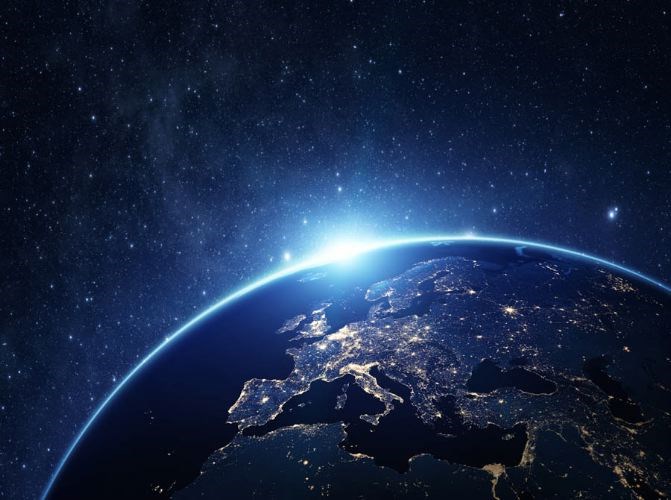There are around 90 naturally occurring elements found on Earth. I say "around" because neither technetium nor francium have ever been found in isolatable quantities. On the other, there is some evidence plutonium might be available in some uranium deposits.
This points out one of the fundamental facts about the composition of our planet - the distribution of elements is quite diverse.
The atmosphere is mostly nitrogen (78.09 per cent) and oxygen (20.95 per cent) by volume. Argon makes up 0.93 per cent and was discovered when scientist liquefied the other two gases from air. There was always a small residual amount of gas left in the container no matter what they did. This is where argon derives its name as it was considered "too lazy" to condense as a liquid.
Carbon dioxide makes up most of the remainder of the atmosphere (0.04 per cent) but the other noble gases (helium, neon, krypton, xenon, and radon) are present in trace amounts along with gases such as nitrous oxide and chlorine. There are even natural trace amounts of hydrocarbons.
These concentrations are for dry air and do not take into account the amount of water vapour in the atmosphere which can vary significantly. It averages about one per cent at sea level and 0.4 per cent for the entire atmosphere but can reach four per cent when raining.
The atmosphere doesn't contain large quantities of iron, silicon, or other minerals. It is made of light gases.
The oceans, on the other hand, are dominated by water. As are streams, lakes, and glaciers and anything else we would consider part of the hydrosphere. There are other elements present in water due to erosion. Minerals such as sodium chloride and magnesium carbonate contribute the saltiness of the salt water bodies.
More rare elements, such as gold, can be found in trace quantities as there is about four kilograms in every cubic kilometre. It doesn't sound like a lot but when you consider the volume of the oceans is 1.322 billion cubic kilometres, the total is 5.3 billion kilograms of gold. By any measure, that is a lot of gold.
So why don't we mine the oceans? There are two difficulties. The first is a cubic kilometre of ocean is a lot of water and we do not have an efficient process for extracting the gold as a consequence. The second is each cubic kilometre of sea water contains 13.7 million tonnes of salt. Isolating the gold would require sifting through all of that salt. The good news is the salt could be disposed of by simply putting it back into the ocean.
The Earth's crust is where we find all of the elements but again the concentrations vary significantly. The crust is dominated by oxygen at 47 per cent, followed by silicon, aluminum, iron, magnesium, calcium, potassium, and sodium. These eight elements make up 98 per cent of the rocks and minerals we see around us. They are a significant component of the soil as well.
The fact oxygen is such a significant component of the Earth's crust is a result of the formation of metal oxides. Many minerals are aluminum or silicon oxides. For example, quartz is composed of silicon dioxide or one silicon atom and two oxygen atoms. But as oxygen has only about 60 per cent of silicon's atomic mass, the amount of oxygen in rock is not quite double the amount of silicon.
In any case, the other 82 or so naturally occurring elements make up only two per cent of the rocks and minerals around us. This is why mining produces a large quantity of waste rock. Finding an ounce of gold might requiring sifting through a tonne of other minerals. These are disposed of in tailing ponds or other forms of impoundment. In one South African mine, the waste rock is simply piled up outside generating an artificial mountain of material.
The final component of our planet is the biosphere where oxygen again dominates at 65 per cent. Carbon is only 18.5 per cent of our body mass while hydrogen is 9.5 per cent. The reason behind this is because most living organism - such as humans - are mostly made up of water. Depending upon the organism, the amount of water can range all the way up to 94 per cent as found in the flesh of a watermelon. For animals, the water content is typically in the 65 to 70 per cent range.
The other major components of organisms are the elements nitrogen, calcium, phosphorus, potassium, sulfur, sodium, chlorine, and magnesium. Typically, these amount to 99.9 per cent of the body mass of most organism but there are certainly some creatures which go to other extremes. For example, one type of sea worm is 1.47 per cent vanadium. Of course, it has a very different chemistry from most other creatures on the planet.
While there are 90 or so elements available on Earth, how they are distributed and how they are used varies significantly by where they are located.



